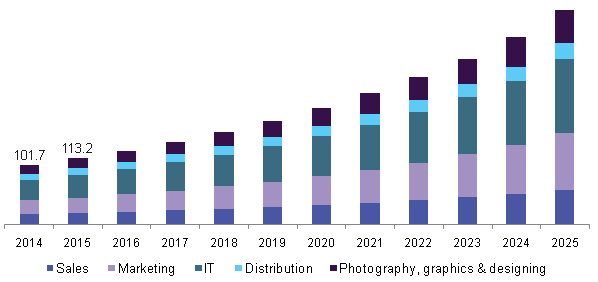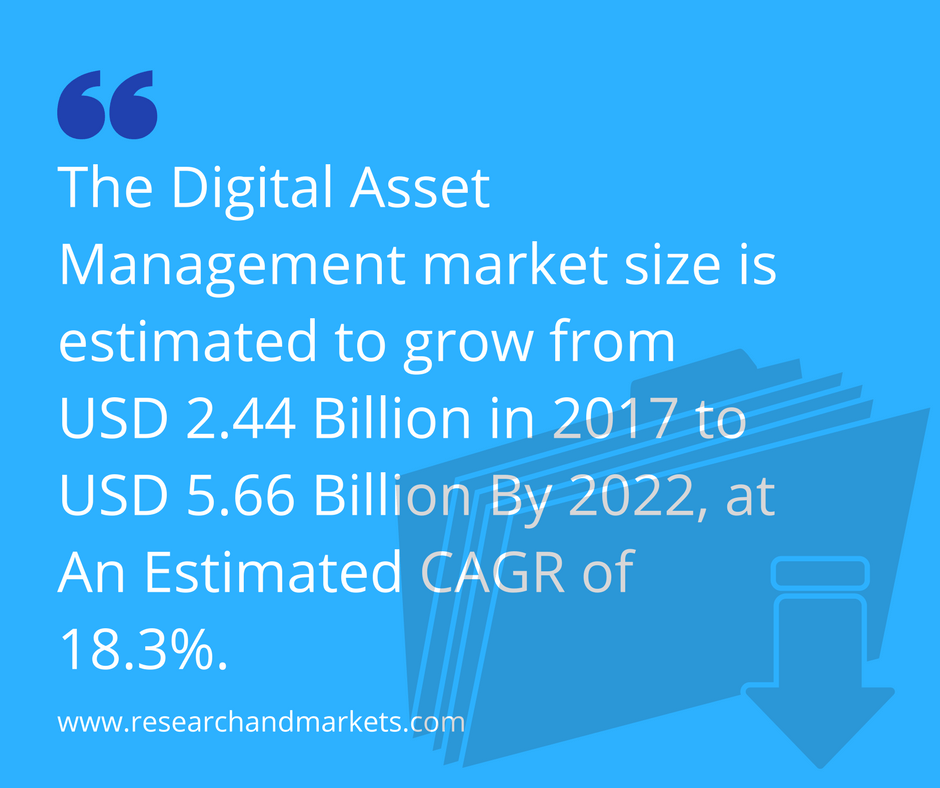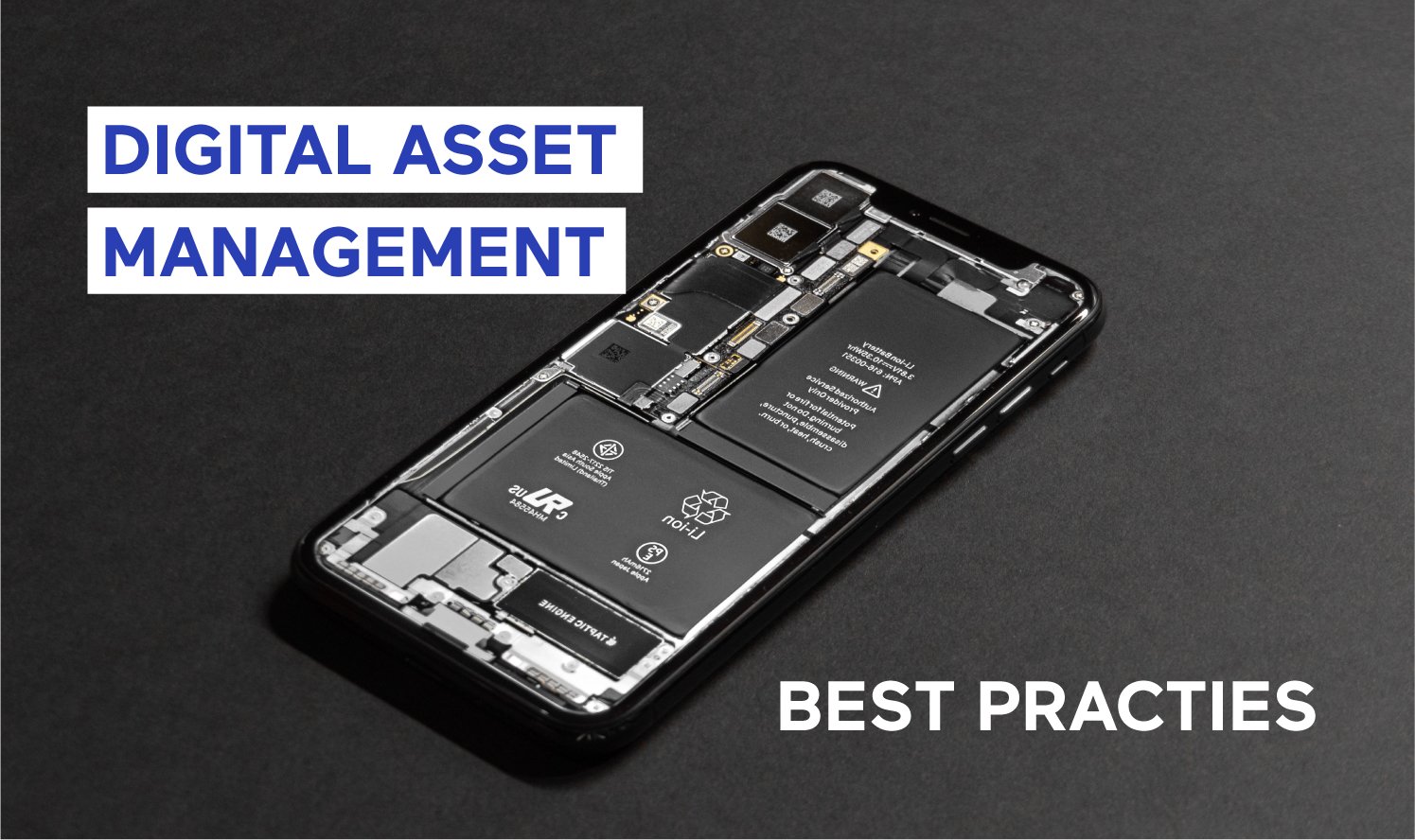Your Essential Guide to Digital Asset Management (DAM) Systems for Business
Managing your brand’s digital presence is more than a full-time job. You know you could get more organized — but there just aren’t enough hours in the day. Sending work over to the web developer, following up with copywriters and managing graphic designers leaves little time for you to organize your online assets. Instead of focusing on the broad category of “organization,” it’s time to consider integrating a Digital Asset Management (DAM) system into your business.
What is Digital Asset Management, for Beginners?
Digital Asset Management (DAM) are centralized hubs of storage where one can store, search, retrieve and share multimedia files with any users from virtually any device, at any time, and from anywhere around the world.
Simply put, anything you have online is a digital asset. Below is a list of the most common digital assets that a DAM can store:
- Images: jpg, gif, bmp, png, raw, etc.
- Artwork: .psd (Adobe Photoshop), .ai (Adobe Illustrator), .indd (Adobe InDesign), etc.;
- RAW photos;
- Video: wmv, mpg, mpg4, mov, etc.
- Audio: mp3, wav, etc.
- Documents: pdf, doc, docx (Microsoft Word), xls, xlsx (Microsoft Excel), ppt, pptx (Microsoft PowerPoint), zip, etc.
More than just a standard single-user cloud-based file storage system, DAM systems allow for the cataloging, grouping, archiving, backing up, maintaining, and exporting of files among its user in real time.
This means that a business with many locations and employees or remote workers/teams could manage each individual’s permission and access levels. Businesses can set access to any of their digital assets from any location to any user whenever necessary.
Who uses DAM solutions?
DAM is mostly used by companies to save, store, and distribute important company assets. However, as an individual, you may already be familiar with digital asset management without even knowing it.
If you’ve ever used Google Drive, Dropbox, or any type of shared folder/file system, you’ve already used a DAM system.
Digitally managing assets can be a great tool for businesses of all size. For smaller companies, newly-hired employees can be trained via DAM-stored video clips and computer based training modules.
For larger corporations, having a shared system where you can pull the necessary files up from anywhere is a lifesaver for on-the-go sales teams or working with off-site teams.
Managing your digital assets in an organized and efficient way is more important now than ever.
Large scale stock image providers like Getty, Shutterstock or Cutcaster have a way to easily catalog and sell their images online.

Digital Management Market by Application, Including Projected Growth Source
The demand for DAM solutions has grown at a healthy clip over the last few years and is not expected to slow down anytime soon. The preference for rich media content, coupled with the increase in sheer volume of digital assets, are the key drivers in DAMs growth.
The amount spent on DAM solutions between 2015–2019, is expected to grow by at least 20% year over year.
Why Digital Asset Management Matters
The web content your company will be forced to manage will grow exponentially with the rise of content distribution channels. A Venture Beat article from 2012 points out that a digital native workforce is the future, and millennials will not tolerate working for companies that fails to deliver digital tools and assets in a frictionless environment.

That means that you’ll need to find, organize, use, and repurpose content rapidly to keep up with the demand and keep costs down. Yet you don’t even have the financial resources — or the time — to keep up on your own. Digital asset management systems (DAMs) can do the work for you at a fraction of what you’d pay to handle such work in-house.
With a digital asset management system, you can make better use of your content across departments and teams as well as create a consistent brand image — an important ingredient in a growing business’s success. Your marketing team will be able to tell at a glance what works, leverage that advantage, and leapfrog beyond the competition with better control over your company’s digital assets.
More IT involvement frees other departments to achieve more: When your IT department enables and manages a cloud-based DAM, your marketing and other teams can convert and store files more quickly, with less bandwidth and less time spent. They’ll get the content into the hands of consumers and can move on to their next challenge without manual requests and clunky workflows to slow them down.
Composite intellectual property comes under your control: With a DAM system, you’re in control of your intellectual property (IP). The photos, videos, fonts, design files, multimedia, and other assets that you’ve built up so carefully to establish and maintain your brand identity will stay safely under your control, says marketing expert Jason Arena in his August 25, 2017 article for CMSWire.com. Furthermore, your rights to use that property will remain in your hands, since a DAM system will neatly organize and attach all the IP data and usage rights via meta tags to the files and you can create user permissions for who can access certain files. Any type of documentation, too, will be more uniform and easier to train new people on with the comprehensive management that a DAM system can provide. Your legal team, too, will be able to respond more quickly to requests to approve marketing, recruiting, and other content.
Put your digital property to better use: With the automation available with such a system, you won’t put out content that clashes with previous content. Your company colors, logo, and format will remain the same across all channels. Your corporate image, therefore, is safe. Furthermore, through a digital management system’s ability to recognize images and logos, your teams can quickly access these key components of marketing and recruiting campaigns to attract qualified customers and quality employees.
APIs automate your digital management for even more efficiency: If you integrate an API (application programming interface) into your digital asset management program, it can help you transfer images, videos, and other digital assets by synchronizing the tagging process with a custom interface that automates the process. In some cases, it will also open up access to others who can use that content.
A/B content testing helps your marketing team discover more effective campaigns: With a digital asset management program in place, marketing teams can better leverage different types of content to deliver and test two messages against one another. This way they can look at the results that were obtained over a period of time and compare one campaign against another to see which one performed better.
The Benefits of Using DAM
Whether you’re a project manager, a small business owner, a photography studio or out on the front lines chasing down sales leads for your company, the benefits to using a DAM solution are abundant. As more businesses processes are streamlined and tech-based, the need for efficient sharing and storage of digital assets will only increase.
As more businesses processes are streamlined and tech-based, the need for efficient sharing and storage of digital assets will only increase.
Save Time
First and foremost, your business will save time by moving projects along faster.
This is especially true when it comes to projects that receive suggestions and input from many individuals or when you are working with remote teams who are not in your location. The storage and dispersal of materials is efficient, fast, and in most cases done in real-time.

Research has shown that employees may spend as much as 10% of their time on file management, and most of that is spent searching for a file in their email, their computer or the source where they got the file from.
That’s 1 out of every 10 hours, or 4 hours in a standard work week simply spent looking for lost multimedia files.
Employees may spend as much as 10% of their time on file management.
What’s more shocking is that same research shows that 35% of the time, they fail to find the file they’re looking for and end up spending more time asking others for the file or having to re-buy a file if it was purchased in the past.
Imagine what your team could accomplish with 10% more free time and 100% access to every file, every image, every report, video, and presentation they need.
Save Money
If time is money, then digital asset management saves both. In terms of salary, training, and materials, an average of $8,200 is spent per person, per year on file management activities.
For a small business of 10 people, that’s $82,000 spent per year on searching, verifying, distribution, organization, security, and backups. With the proper digital asset management system, this number is dramatically decreased.
Selling Digital Assets
If your online company is built on providing digital assets (such as photos or videos) on a large scale, then a DAM is not so much a benefit as it is a necessity.
Companies looking to sell digital assets like photos, videos, templates or courses need to make sure that their files are searchable, organized coherently and downloadable.
By cataloging all of your files, having them keyworded, and categorized by things like orientation, color, size, or file type, a searcher can easily find the digital assets they need.
Organizational Efficiency
DAM brings organization. If you’re looking to organize and make your multimedia files searchable, you can break down how in-depth your files are labeled and how they’re stored.
In doing so, and by having a searchable repository for all your business’ assets, a business ensures that your team will never have to recreate graphics, artwork, files, or other data that was already in existence, yet lost in a sea of data dump.

What’s more, with easy access to these files, your organization can create a consistent brand experience. Remember, every point of contact between your business and your customer is an extension of your brand.
Employees will have access to the same brand standard files, reports, images, logos, and more.
Efficiency is increased and consistency is achieved for an overall positive experience.
What to Look for When Choosing a DAM System
The biggest question DAM experts or software engineers get is “What kind of Digital Asset Management system do I need for my business?”
There is no one answer to the question, and much depends on several factors and how much customization your system will need.
These may include: what type of business you operate, what rate you’re anticipating growth within your business, who will be adding metadata and uploading your files, who is accessing your files and what you’ll be using the DAM for, among others.
To break it down, there are basically three different types of DAM services:
Software-as-a-Service (SaaS)
This is a cloud-based digital asset management system that exists online, though not physically at your location. One of the benefits of using a SaaS option is that there’s no hardware or servers for you to maintain or install.
Just as convenient, SaaS DAMs are usually accessible to anyone with an internet connection and the right user permissions.
Security is provided by the provider company and can be updated by the business in real time. Another nice thing is that updates to your system are never a thing you must worry about, as it’s all done digitally.
SaaS systems are typically low-cost and billed monthly or yearly with tiered plans based on your specific needs. The barrier of entry is low, and it’s a great place to start looking for your digital asset management needs or to compare options.
If one of these SaaS options isn’t right for you, you may want to look at the following two options.
On-premises DAM
This is software that a business can install on their own hardware (computers). This type of DAM is generally used when a business needs an added layer of security due to the storing of sensitive information (customer billing information, legal information, etc.).
When a business purchases an on-premises DAM, they also gain access to the way the DAM stores their data, which is extremely helpful for experienced DAM users.
This type of system will require a decent amount of on-site IT support from within your organization, so it is best suited for companies with their own dedicated IT department.
Open Source
The most customizable DAM system is an open source solution that an engineering team can build for your business. Open source DAMs come in both on-premises or cloud-based formats.
Because open source DAMs are usually a collaborative development, new features to digital asset and media storage generally hit right away.
Whilst the setup of an open source solution can be more complex than an off-the-shelf solution, the benefits are often well worth the extra commitment.
Flexibility and customization are key to creating a solution that is going to fit your needs. You also have the ability to freely innovate on your DAM as you go — you’re not stuck with what you implement in the first instance.
Open source essentially allows you to create any kind of DAM you want, perfectly tailoring it to your specific use case.
Find a Digital Asset Management System That Will Grow with Your Business
Asset Growth
Before you consult with a digital asset management system provider, think about your needs. Which kinds of digital assets do you have? How do you want these assets to be organized? How do you plan to grow your inventory? What are the user types and permissions those user types will need? For instance, you may have several videos of your product at work, but haven’t recorded any webinars or online learning assets. When you look at a digital asset management provider, you need to take into consideration both your current inventory and your future plans to come up with a management strategy that will best allow you to control your digital assets as you grow your business.
Team Growth
As more assets are created over time, only a select few will deliver consistent, reliable value. Your team needs the ability to communicate effectively on the value of assets, and a DAM improves visibility into the value of your assets. Employees don’t want to use assets that don’t drive results; implementing a best practices DAM style will give them access to assets with proven value. This type of set up will go a long way toward employee satisfaction and team building. Plus it will end up providing more value and saving money.
Industry Leadership & Regional Impact
DAM’s adoption crosses industry lines as the proliferation of assets grows in response to the upward growth of social media for business. The DAM Market Size & Forecast Report 2014–2025 claims that customer-driven delivery models are creating a demand for content on products and brands that can no longer be ignored. Using a DAM system effectively for sales teams will push the brands who use them ahead of their competition.
The report points to market domination from North American companies, but outsourcing and emerging technologies in the Asia Pacific region are opening up the market to DAM solutions there as well.
Final Thoughts
Learning how to manage digital assets as a company grows using a digital asset management system that’s scalable, manageable, and affordable will create success across different departments and deliver ROI in the form of higher productivity and lower costs. Rather than multiple departments creating their own content repositories in their own storage systems (aka stuck in a silo), the content will exist in a central repository.
Team members will be able to access the system and use streamlined file search and retrieval features. The savings in recreating lost or misplaced assets alone will deliver ROI, but the returns on long-term productivity are the true drivers of DAM technology adoption.
If you’re thinking of implementing a DAM solution for your company, regardless of the size of your team, contact us today for a consultation on the best DAM systems out there or a customized solution for your exact needs.



